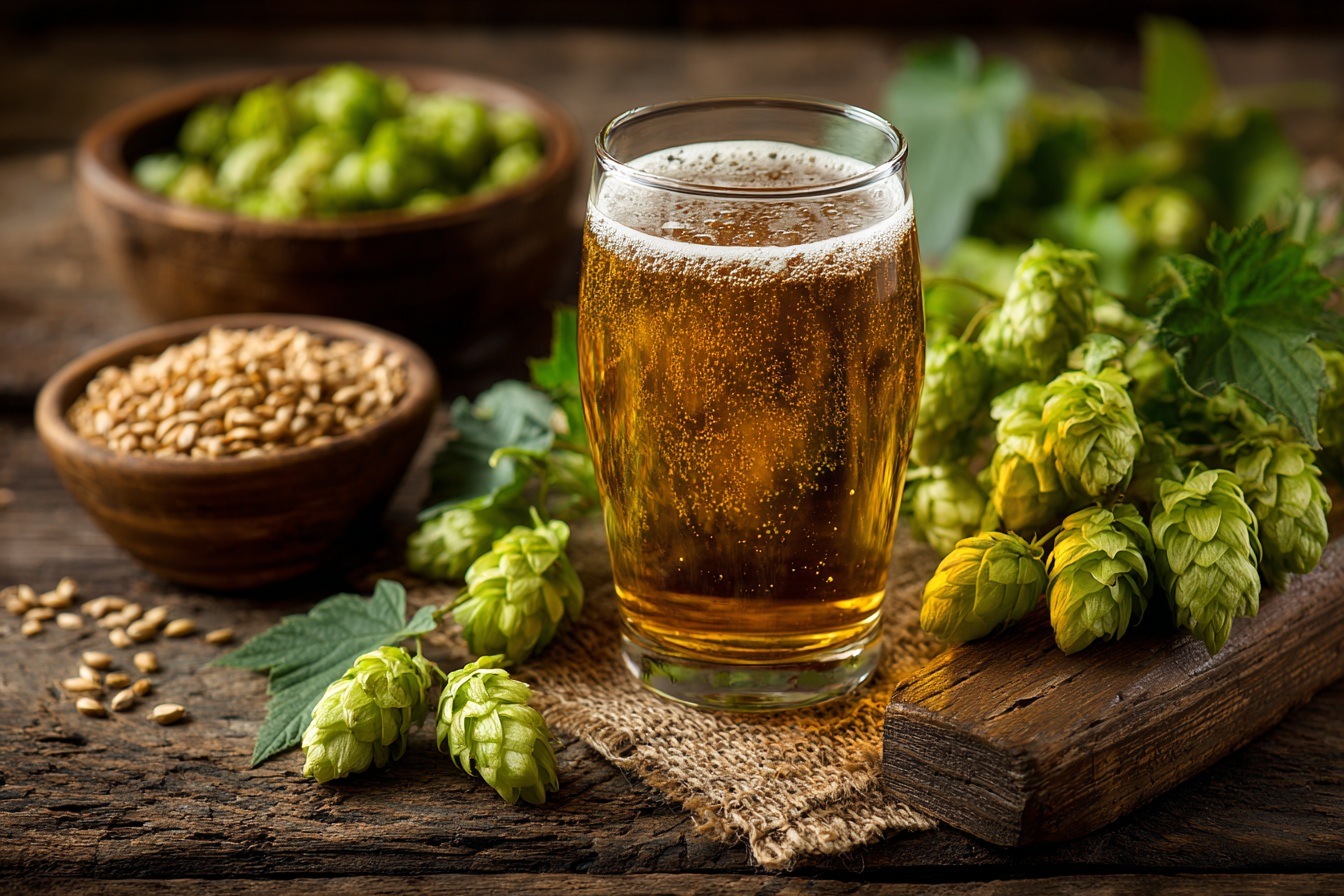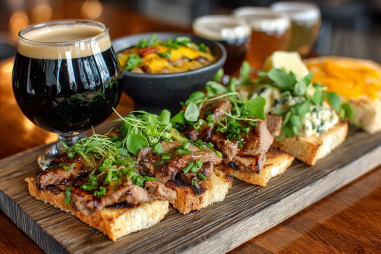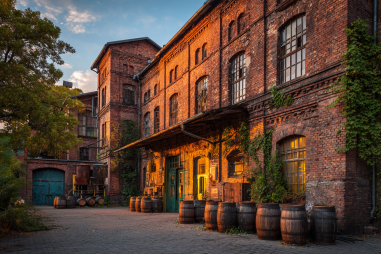Pale lager is one of the most widely enjoyed beer styles around the world, celebrated for its clean, crisp, and refreshing qualities. But what exactly gives pale lager its distinct character? The answer lies in the carefully selected brewing ingredients that come together to create this familiar yet nuanced beer. From the malts that provide the backbone, the hops that contribute subtle aroma and bitterness, to the special yeast strains and water chemistry that bring everything to life, each ingredient plays an essential role. Let’s dive deeper into the key components that make pale lager unique and how they influence its final flavor and quality.
Understanding the Basics: Essential Beer Ingredients
Before diving into the specifics of pale lager, it’s helpful to understand the four fundamental ingredients in all beer: malted grains, hops, yeast, and water. Each of these ingredients impacts the beer’s flavor, aroma, mouthfeel, and appearance in individual ways. Malted grains provide fermentable sugars and color; hops add bitterness, aroma, and preservative qualities; yeast ferments sugars to alcohol while producing distinctive flavors; and water serves as the base, affecting the overall profile through its mineral content. With pale lager, the choice and balance of these ingredients are crucial to achieving its signature clean and crisp profile.
Malt Varieties Used in Pale Lager
Malt is the foundation of any beer, supplying the sugars needed for fermentation as well as contributing flavor and color. Pale lagers predominantly use pale malt varieties, which tend to be light in color and mild in flavor. The most commonly used malt is Pilsner malt, known for its subtle sweetness and pale golden hue. This malt is made from barley that’s carefully kilned at lower temperatures, preserving a clean malt flavor that allows hops and yeast characteristics to shine through.
In some recipes, brewers may blend Pilsner malt with small amounts of other malts such as Munich or Vienna malt to add a touch of malt complexity and body without overwhelming the beer. However, the emphasis is always on maintaining a light, crisp palate. The pale malt’s delicate and neutral profile makes it easier for the other ingredients to take center stage.
Characteristics of Hops Typical for Pale Lager
Hops are the flowers that add bitterness to balance malt sweetness, along with aroma and flavor. Pale lagers usually feature noble hops or their modern equivalents. Noble hops like Saaz (Czech), Hallertau (German), Tettnang, and Spalt are prized for their mild, earthy, floral, and sometimes slightly spicy notes. These hops contribute gentle bitterness that prevents the beer from becoming cloying while providing subtle aromatic complexity.
Unlike more hop-forward beer styles such as IPAs, pale lagers typically use hops conservatively—enough to add balance but not to dominate. Hopping schedules may also involve late additions or dry hopping to enhance aroma without overwhelming bitterness. The goal is to keep the hop character delicate and complementary, supporting the clean malt and yeast profile rather than overshadowing it.
Yeast Strains and Their Role in Pale Lager
Yeast is often the secret star in pale lager brewing. Lager yeast strains (typically Saccharomyces pastorianus) ferment at cooler temperatures, usually between 45°F and 55°F (7°C to 13°C), which slows the production of esters and phenols—compounds that would otherwise impart fruity or spicy flavors. This cool fermentation creates the hallmark clean, crisp, and subtle taste that pale lagers are known for.
The yeast also contributes to the beer’s body and carbonation. After fermentation, lagers undergo a period of cold conditioning or “lagering,” which helps mellow out any remaining off-flavors and clarifies the beer, resulting in a smooth and polished final product. Selecting the right yeast strain is crucial because even slight variations can dramatically impact the flavor clarity and mouthfeel in pale lagers.
The Importance of Water Chemistry in Pale Lager Brewing
Water is often the overlooked ingredient in beer, yet its mineral composition plays a vital role in brewing pale lagers. The specific profile of minerals such as calcium, magnesium, sulfate, sodium, and bicarbonate affects enzyme activity during mashing, yeast health, and ultimately flavor perception.
Pale lagers typically benefit from soft to moderately hard water with a balanced sulfate-to-chloride ratio. For example, European brewing regions known for iconic pale lagers have water with low bicarbonate levels and moderate sulfate, which enhances hop bitterness and clarity without harshness. Brewers often treat or adjust their water chemistry to mimic these profiles, fine-tuning ion concentrations to optimize mouthfeel, bitterness, and malt expression.
How Ingredient Choices Affect Flavor and Aroma
The interplay of malts, hops, yeast, and water defines the sensory experience of pale lager. The use of Pilsner malt lends a smooth, slightly sweet canvas, while noble hops introduce delicate floral and herbal notes with restrained bitterness. The lager yeast strain ensures clean fermentation, minimizing fruity esters and allowing the malt and hops to stand out without interference.
Water chemistry subtly supports and enhances these flavors—balanced sulfate levels bring out hop crispness, while the calcium content helps stabilize flavors and improve mouthfeel. Each ingredient’s quality and proportion influences whether the pale lager appears bright, refreshing, and well-rounded or dull and one-dimensional.
Ingredient Sourcing and Quality Considerations
High-quality ingredients are paramount in crafting a memorable pale lager. Many brewers prioritize sourcing premium Pilsner malt from reputable maltsters with consistent processing standards. Freshness is key, since old or improperly stored malt can develop stale or oxidized flavors.
Hop selection involves choosing fresh crops or well-preserved hop pellets/cones to ensure aromatic oils remain intact. Proper storage in cool, dark, and oxygen-free conditions helps maintain hop quality.
Yeast vitality is maintained through careful propagation and storage to prevent contamination and off-flavor development. Water must be tested and treated as necessary — sometimes requiring filtration, remineralization, or pH adjustments — to replicate the ideal brewing profile.
By paying close attention to ingredient quality and consistency, brewers can guarantee each batch of pale lager reaches desired flavor profiles and freshness standards.
Bringing It All Together: Crafting the Perfect Pale Lager
The artistry of pale lager brewing lies in skillfully balancing each ingredient to achieve that signature crisp, clean, and refreshing beer. Using light, neutral Pilsner malt sets the stage; noble hops provide subtle bitterness and aroma; lager yeast offers a smooth, refined fermentation profile; and carefully treated water completes the foundation. Master brewers appreciate that no single ingredient works in isolation—each contributes harmoniously to the final product.
When combined with precise brewing techniques and thoughtful ingredient selection, these elements culminate in a pale lager that’s both approachable for casual drinkers and satisfying for beer enthusiasts. Whether enjoyed as a thirst-quenching session beer or paired with a wide range of foods, pale lager’s timeless appeal continues to be defined by its unique brewing ingredients.







